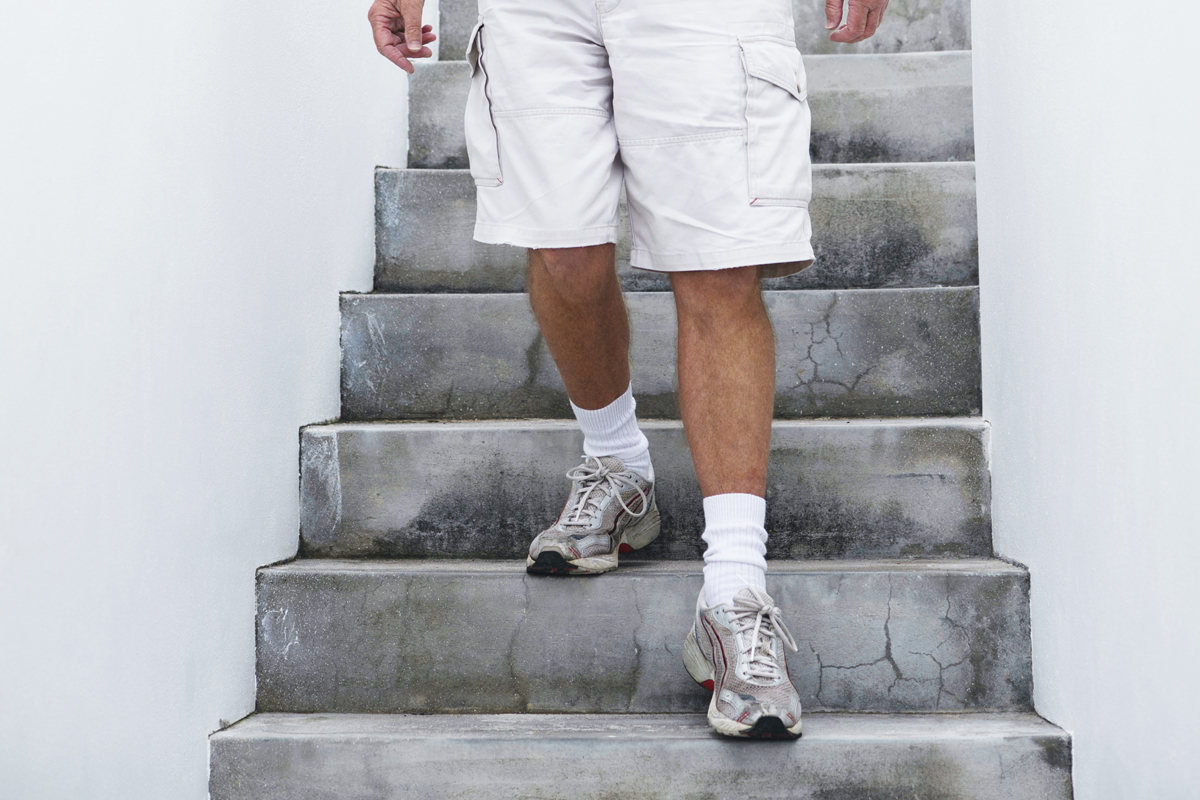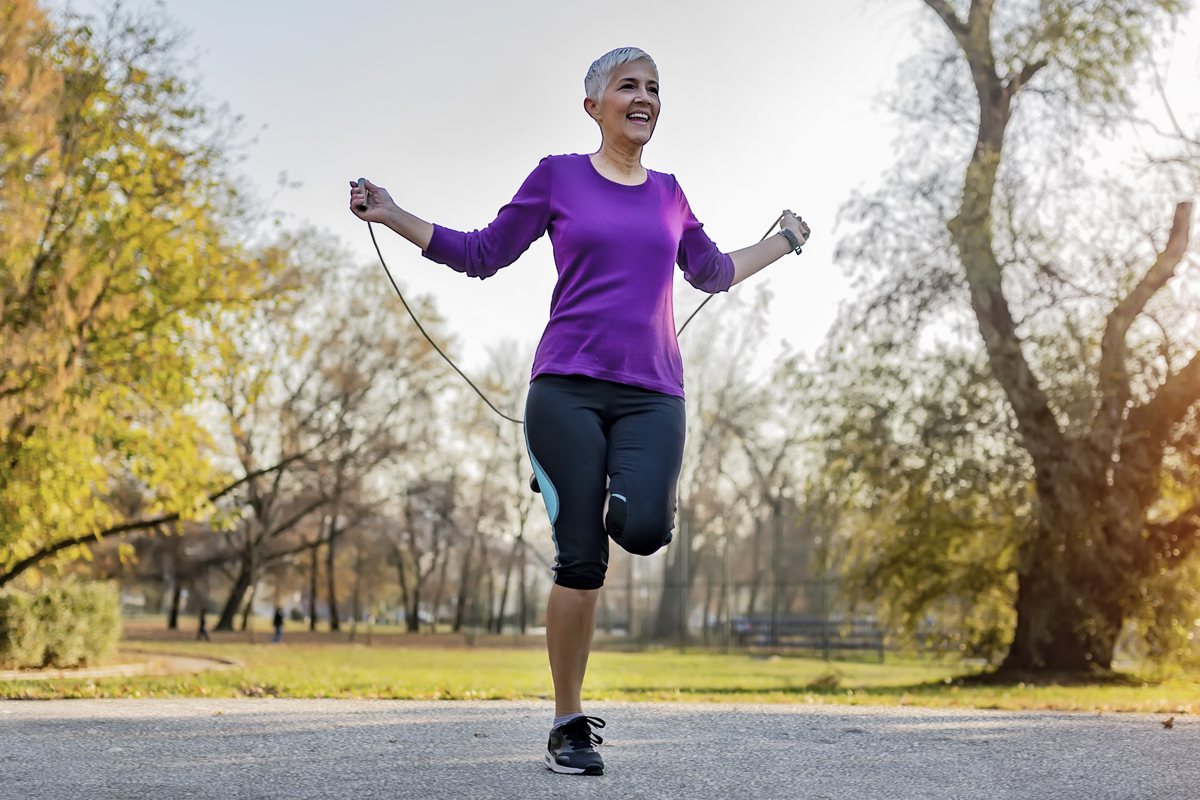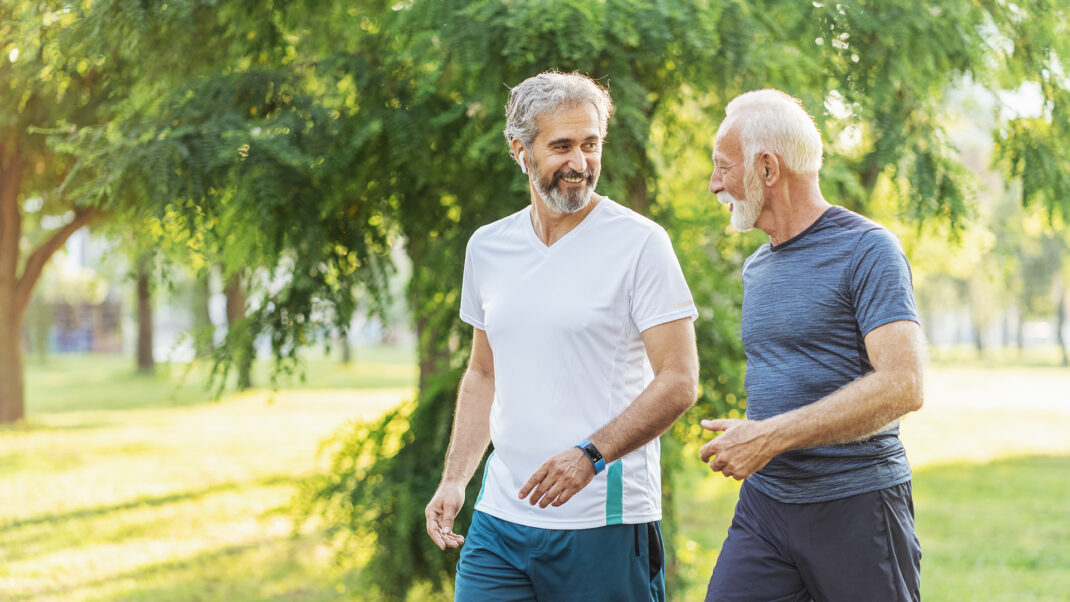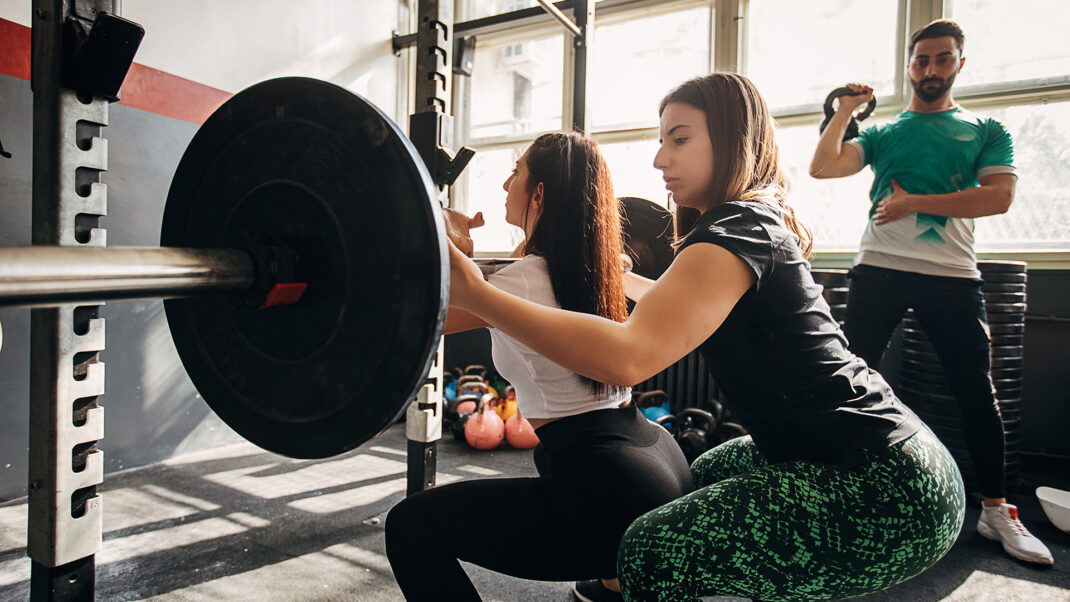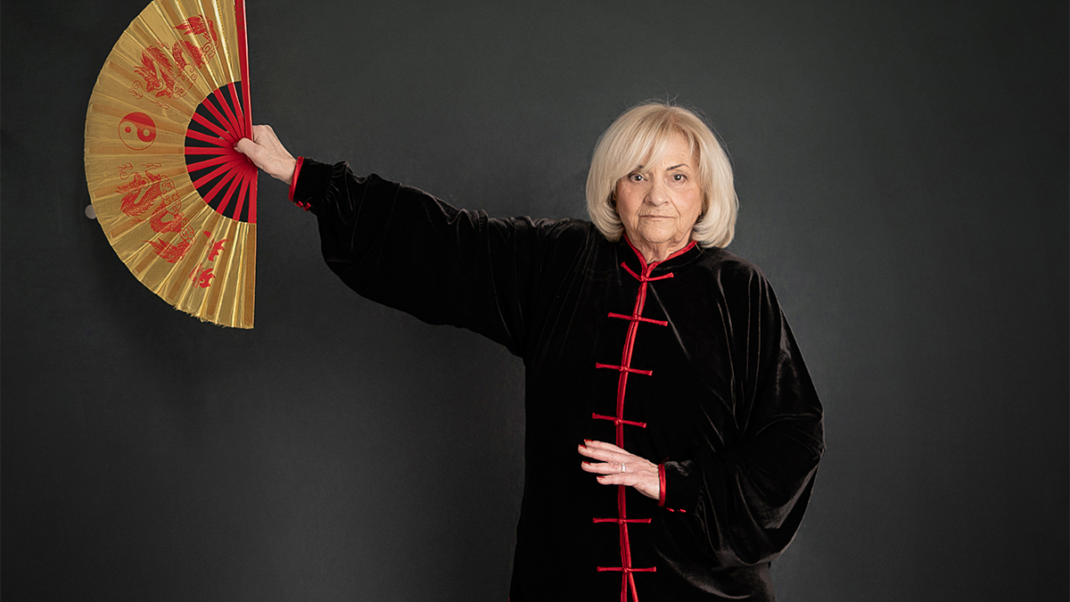Having the Bone Health Talk With Clients
A diagnosis of osteoporosis means it's time to modify, not end, a workout regimen to improve bone health.
| Earn 1 CEC - Take Quiz

Clients may ask you about calories or how to “tone,” but how often do they ask questions about bone health and osteoporosis? If clients aren’t asking these questions, they should: 54 million adult Americans are at risk of breaking a bone (NOF 2019a). You probably already know that people who have osteoporosis should do weight-bearing exercises to slow the degradation and ease the effects. However, most people are given no more explanation than that. You may be in a position to offer answers to some of your clients’ questions.
Since this degenerative bone disease can make seemingly mundane activities—like carrying groceries, walking the dog or hugging grandchildren—risky, even your most proactive, engaged clients may become timid and reserved in the gym as they question their abilities and lose trust in their bodies. As their trainer, you are left to figure out what kinds of exercise to suggest, as well as how to offer emotional support for the fear and uncertainty that this diagnosis can bring.
The good news is that by giving proper guidance on exercise, sleep and vitamin D intake, you can help your clients to maintain their bone density, improve their bone health, and you’ll also be a valuable partner to allied health professionals.
Strength Through Stress
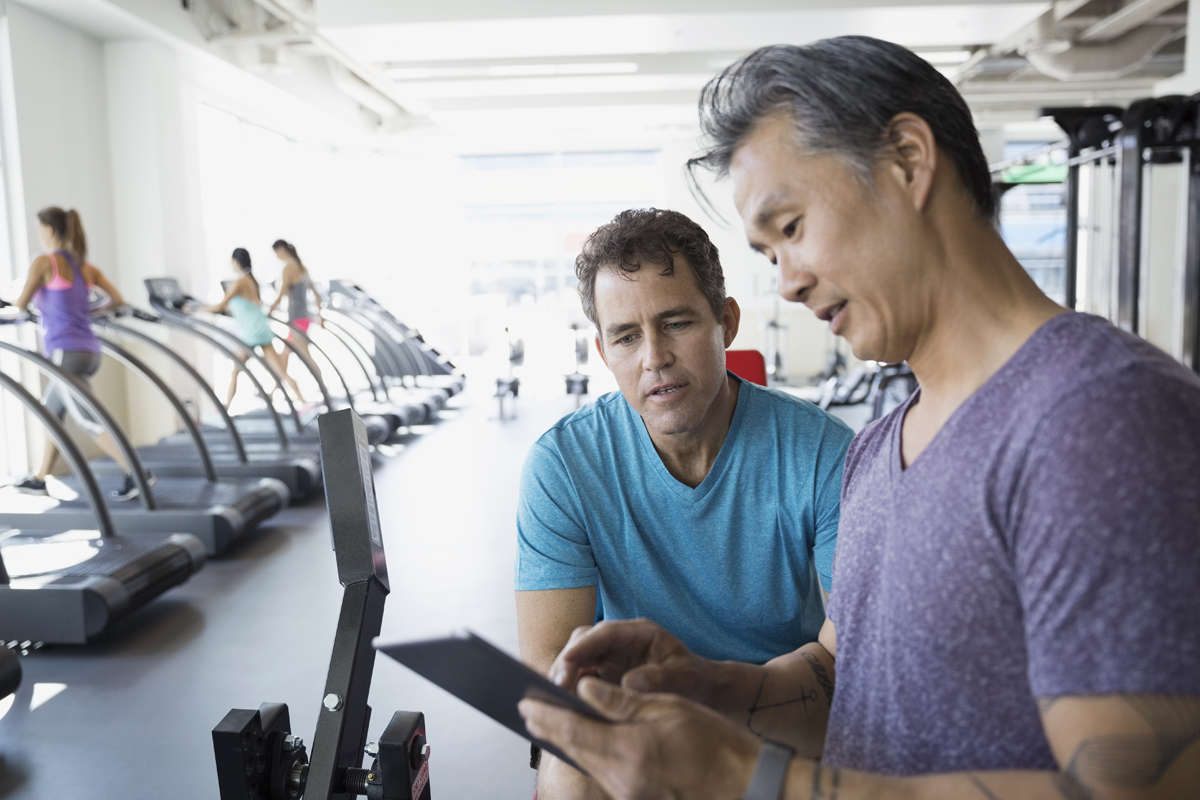
Osteoporosis is the most metabolic bone disease, marked by decreased bone mass and structural deterioration of tissue, leading to bone fragility and a greater likelihood of fractures, especially of the spine, hip and wrist (Hsu et al. 2014). Osteoporosis occurs for a number of reasons, including family history, nutritional and gastrointestinal problems, and sedentary lifestyle (IOF 2017). For most people, Wolff’s Law applies: Putting stress on the axial points of a bone activates bone cells called osteocytes, and engaging these cells alters the balance between bone formation and resorption in favor of formation, called osteogenesis. In short, bones will adapt based on the demands placed on them. The result? Stronger, denser bones (Frost 1994; Office of the Surgeon General 2004).
And while most things erode with use, the musculoskeletal system does not. The more we use our muscles and bones, the stronger they get. According to American Bone Health—a community-based nonprofit organization focused on public education and advocacy—regular gym-goers need to focus on a wide range of high- and low-impact exercises to strengthen their bones (ABH 2016a). Weight-bearing activities are the best for achieving this. (Think about giving clients exercises that require them to have one foot on the ground at any given time.) ABH (2016a) and the Cleveland Clinic (2015) recommend a variety of exercises for safely strengthening bones (see “Exercise Suggestions for Osteoporosis,” below).
Because our skeletons are not visible on the surface, it can be tough to know how to challenge your clients without inadvertently putting them at risk of fracture. When clients first express concern about their bone density, they may bring you their results from a DXA scan, a medical test that measures bone mineral density (BMD). Skeletal strength is presented in the form of a T-score, a measurement that compares a person’s bones with a peak bone mass, represented by a healthy 30-year-old of the same sex. The T-score indicates the number of standard deviations of a person’s BMD above or below a reference value of 0.0. A score of –1 and above is considered normal; –1 to –2.5 means osteopenia, or low bone mass; –2.5 and below indicates osteoporosis (ABH 2016b).
T-scores sometimes leave people puzzled, so it’s important that trusted professionals know what a client’s score means so they can correctly identify where it falls on the chart and then respond appropriately (e.g., by modifying the client’s workouts). Studies have also shown that, in addition to BMD, bone microarchitecture may contribute significantly to bone strength and to the risk of fracture (Dalle Carbonare & Gianni 2004).
At least when they’re in the gym, clients should do exercises that require a lengthened spine. Avoid oblique dips and crunches on the floor, for example, and replace these exercises with straight-spine substitutes, such as plank variations. With all exercises, keep safety top of mind (ABH 2018).
See also: Bone Health: A Primer
Staying Balanced
Another key area of concern for people who have been diagnosed with osteopenia or osteoporosis is balance and fall prevention, which involve three factors: vision, the inner ear (vestibular) system and musculoskeletal strength. As a trainer, you may not be able to do much about the first two, but you can help clients strengthen their bodies and improve bone health by encouraging them to practice balancing postures. A simple yoga tree pose is one example. Have clients lift one foot and set it on the ankle, calf or inner thigh (never on the knee area) and press the grounded foot into the floor. Instruct them to hold that position while they look at a static spot in front of them to increase their sense of stability; for extra strength-building, give them a medicine ball to press over their heads.
People who have osteoporosis often have muscle weakness and increased kyphosis, which also can lead to poor balance control and to falls. Program design elements that strengthen weak muscles and address postural alignment will help clients feel more confident and help prevent falls (Hsu et al. 2014). Medications may also affect balance and the risk of falling, so be sure that your clients have clearance from their doctor and that you are aware of any contraindications (NOF 2019b).
Loading Up
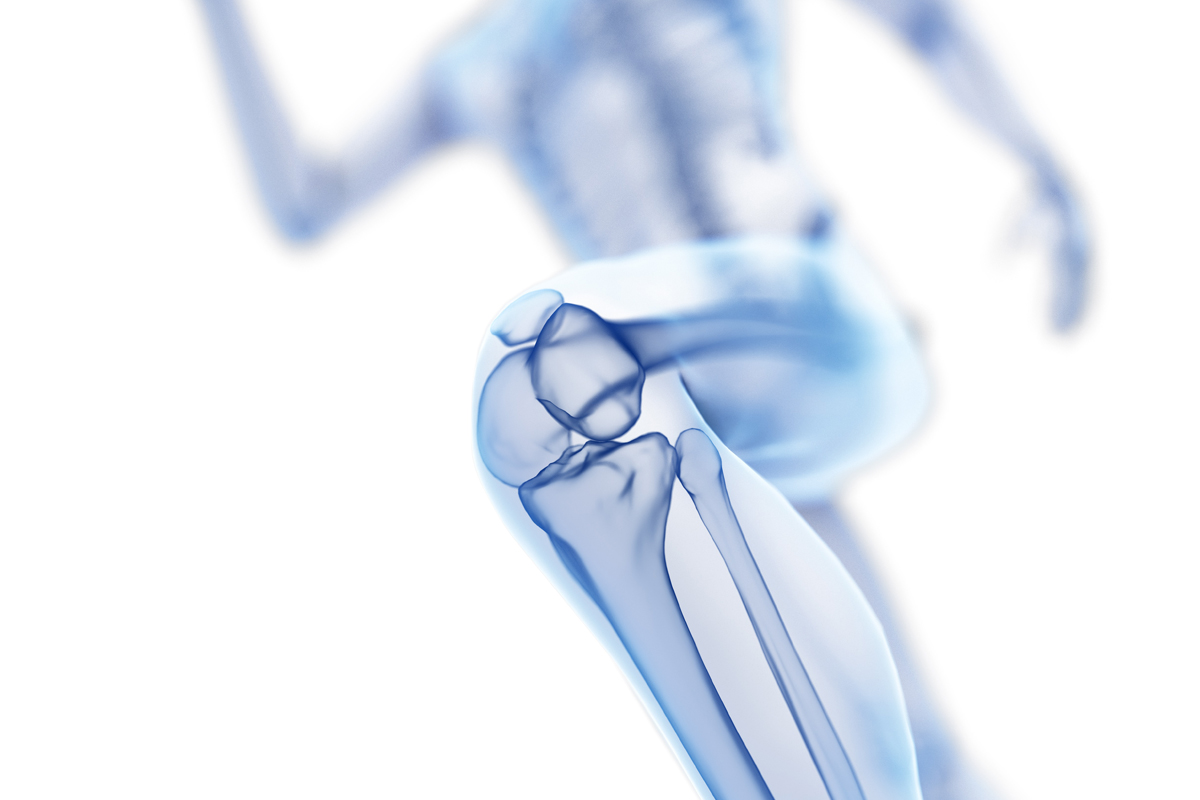
Building strength through isometric exercise is helpful, but to actually trigger osteogenesis, clients need to “load” multiples of their own body weight onto their bones (Deere et al. 2012). This can be difficult to do safely at the gym, but more facilities are opening where clients can engage in a practice called osteogenic loading (OL), a form of exercise done on special equipment to safely simulate multiples of body weight in the arms, shoulders, legs, hips and spine.
Most exercise loads bone to a certain degree, but for strong osteogenic stimulation, the load needs to reach a level that’s about four times the client’s body weight (Brown 2018).
Osteogenic loading is not a substitute for traditional exercise, but rather a complement to increase bone health. The Journal of Osteoporosis and Physical Activity states: “OL therapy as an adjunct to standard care, or as a preventative approach, is both feasible and effective in improving BMD for ambulatory individuals with below –1 T-scores” (Hunte, Jaquish & Huck 2015). As clients increase their skeletal strength, reversal of osteoporosis becomes possible.
Ways to Enhance Osteogenic Loading
Share the following simple lifestyle enhancements with clients:
- Encourage desk-bound clients to stand frequently and walk every hour, as much as possible.
- Practice stepping down stairs with a gentle “thud,” or walk downhill.
- Do 100 heel drops.
- Jump rope, if ability permits.
- Begin a strength training program, even a moderate one, and take part at least twice a week.
Source: Brown 2018.
STAND AT WORK
Combine a meeting with a walk for extra movement at work.
PRACTICE STAIRS
Eschew the elevator and choose stairs, stepping purposefully.
DO HEEL DROPS
Heel drops are an easy low-impact option. Plan for 100 a day.
JUMP ROPE
This high-impact loading exercise is fun and affordable.
STRENGTH TRAIN
Weightlifting is an essential element of program design for osteoporosis.
Exercise Suggestions for Osteoporosis
Before working with clients who have osteoporosis, ensure that they have clearance from their doctor or physical therapist. Here are some suggestions from the Cleveland Clinic (2015):
- Exercise should be weight-bearing.
- Clients should start slowly. If they have spinal fractures, do not suggest activities in which they reach down, bend forward, make rapid twisting motions, attempt any heavy lifting or do anything else that increases the chances of a fall.
- High-impact weight-bearing exercises can help to rebuild lost bone; these include dancing, hiking, stair climbing, tennis, squash and jumping rope.
- Low-impact weight-bearing options include brisk walking; use of elliptical machines; use of strength training machines; body-weight exercises; functional movements, such as standing and rising up on your toes; yoga; and Pilates.
- Tai chi and other forms of martial arts improve endurance, balance, flexibility and coordination.
See also: Are Pilates and Yoga Right for Clients With Low Bone Density?
Sleep and Sun for Bone Health
Another primary lifestyle adjustment you can encourage your clients to make is to get serious about their sleep habits. Natural melatonin production is vital to the reformation of bone, and studies have shown that people who can’t get in a biological sleep rhythm, such as shift workers, have less BMD over time (Maria & Witt-Enderby 2017). Ask your clients about their sleep, and urge them to set a strict bedtime for themselves. Suggest that they stop looking at computer and television screens an hour before bed, so that the blue light doesn’t trick their brains into thinking it’s daytime, prolonging wakefulness.
When clients are awake during the daytime, encourage them to exercise outdoors (20 minutes without sunscreen) to get some vitamin D—something we all need, especially individuals with low bone density. Vitamin D, a secosteroid hormone that is essential for calcium absorption and bone mineralization, is positively associated with BMD (Laird et al. 2010). Prolonged and severe vitamin D deficiency can lead to osteomalacia, a decreased mineralization disorder. According to Laird and colleagues, research suggests that “the role of vitamin D in preventing fractures may be via its mediating effects on muscle function . . . and inflammation.”
If there’s a good spot near the gym, consider taking clients outside for part of the workout, especially on a sunny day, to encourage vitamin D production. Plyometric boxes are easy enough to drag outside so clients can do stepups and vaulted pushups, and bodyweight exercises are even easier to do in the great outdoors.
Bone Up on Health
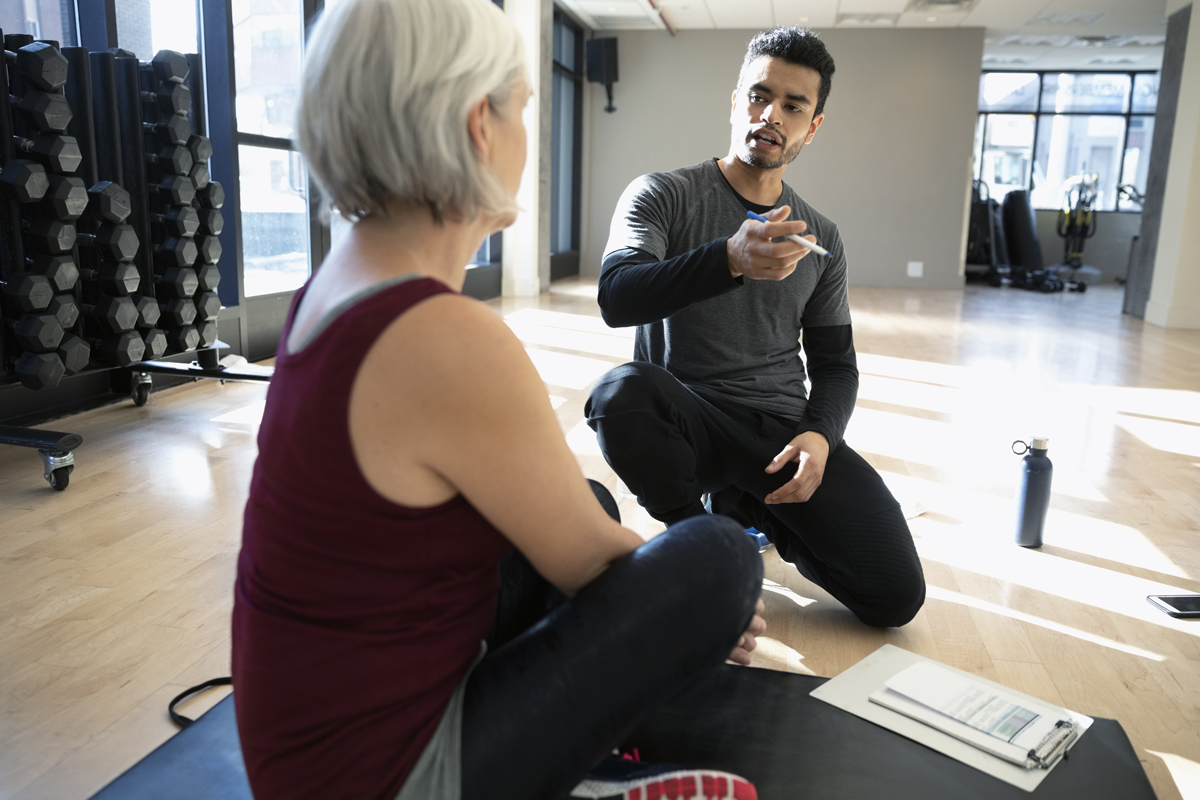
The National Osteoporosis Foundation has found that about 10 million older Americans have osteoporosis and another 44 million have low bone density; in other words, half of adults age 50 and older are at risk of breaking a bone. The NOF (2019a) predicts that, by 2025, osteoporosis will be responsible for an annual total of three million fractures and $25.3 billion in costs. The good news is that educated fitness professionals can help, as weight-bearing exercises are recommended.
Be assured, diagnoses of osteoporosis among your clients does not mean an inevitable end to your sessions. As always, clients should work with their doctors to determine the best course of action; from there, the trainer fills an important role in partnering with clients to build strength, discuss available resources and foster hope.
See also: The Anatomy of Functional Training Risks
References
ABH (American Bone Health). 2016a. Which exercises are best for building healthy bones? Accessed June 2019: americanbonehealth.org/exercise/which-exercises-are-best-for-building-healthy-bones/.
ABH. 2016b. Understanding bone density results. Accessed June 2019: americanbone-health.org/bone-density/understanding-the-bone-density-t-score-and-z-score/.
ABH. 2018. Is my exercise program safe? Accessed June 2019: americanbone-health.org/exercise/is-my-exercise-program-safe.
Brown, S.E. 2018. Osteogenic loading—A key to reversing osteoporosis. Accessed June 2019: betterbones.com/exercise/osteogenic-loading/.
Cleveland Clinic. 2015. Exercising safely with osteoporosis. Accessed June 2019: my.clevelandclinic.org/health/articles/15074-exercising-safely-with-osteoporosis.
Dalle Carbonare, L., & Gianni, S. 2004. Bone microarchitecture as an important determinant of bone strength. Journal of Endocrinological Investigation, 27 (1), 99–105.
Deere, K., et al. 2012. Habitual levels of high, but not moderate or low, impact activity are positively related to hip BMD and geometry: Results from a population-based study of adolescents. Journal of Bone and Mineral Research, 27 (9), 1887–95.
Frost, H.M. 1994. Wolff’s Law and bone’s structural adaptations to mechanical usage: An overview for clinicians. The Angle Orthodontist, 64 (3), 175–88.
Hunte, B., Jaquish, J., & Huck, C. 2015. Axial bone osteogenic loading-type resistance therapy showing BMD and functional bone performance musculoskeletal adaptation over 24 weeks with postmenopausal female subjects. Journal of Osteoporosis and Physical Activity, 3 (3).
Hsu, W-L., et al. 2014. Balance control in elderly people with osteoporosis. Journal of the Formosan Medical Association, 113 (6), 334–39.
IOF (International Osteoporosis Foundation). 2017. Fixed risk factors. Accessed June 2019: iof-bonehealth.org/fixed-risk-factors.
Laird, E., et al. 2010. Vitamin D and bone health; potential mechanisms. Nutrients, 2 (7), 693–724.
Maria, S., & Witt-Enderby, P.A. 2017. Circadian regulation of bone. In S.M. Jazwinski, V.P. Belancio, & S.M. Hill (Eds.), Circadian Rhythms and Their Impact on Aging (pp. 65–82). New York: Springer Publishing.
NOF (National Osteoporosis Foundation). 2019a. Osteoporosis fast facts. Accessed June 2019: nof.org/wp-content/uploads/2015/12/Osteoporosis-Fast-Facts.pdf.
NOF. 2019b. Keeping your balance. Accessed June 2019: nof.org/patients/fracturesfall-prevention/exercisesafe-movement/keeping-your-balance/.
Office of the Surgeon General. 2004. The basics of bone in health and disease. Bone Health and Osteoporosis: A Report of the Surgeon General. Accessed June 2019: ncbi.nlm.nih.gov/books/NBK45504/#ch2.s7.

